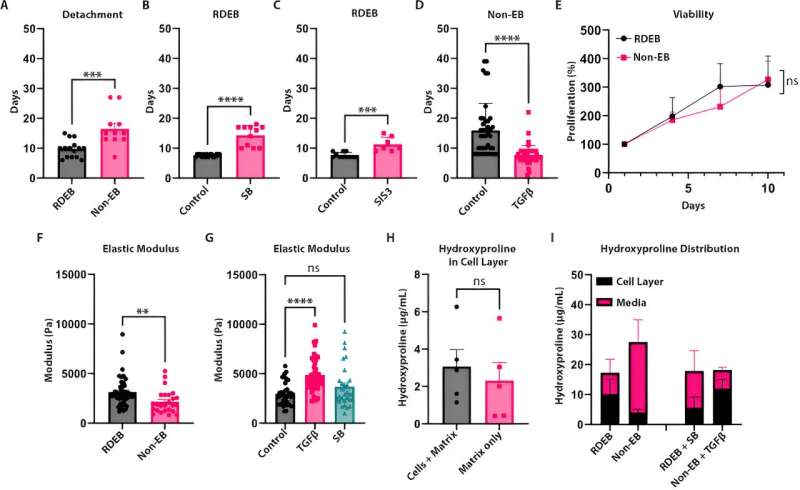This article has been reviewed according to Science X's editorial process and policies. Editors have highlighted the following attributes while ensuring the content's credibility:
fact-checked
peer-reviewed publication
trusted source
proofread
Repurposing FDA-approved drugs may decrease fibrosis in butterfly disease

"Recessive Dystrophic Epidermolysis Bullosa (RDEB) is the worst disease you've probably never heard of," says dermatology researcher Andrew South, Ph.D.. RDEB patients and their families know just how horrible it can be. Epidermolysis bullosa (EB) diseases such as RDEB are a rare group of skin blistering diseases that also increase fibrosis, or scarring. Fibrosis is a normal part of the wound healing process. However, in RDEB patients, frequent skin sores lead to a buildup of scar tissue, causing the skin to become even more fragile with every injury.
Dr. South's lab has been working on ways to delay fibrosis in RDEB, sometimes called "butterfly disease." In the group's most recent study, Grace Tartaglia, Ph.D., a recent graduate from Dr. South's lab, and colleagues used a drug screen to investigate FDA-approved drugs that could be repurposed to delay fibrosis in RDEB patient tissue samples. This unbiased approach revealed three major drug categories: kinase inhibitors and steroids, which were already known to decrease fibrosis, and a third surprising class of drugs: antivirals.
The research is published in the journal EMBO Molecular Medicine.
Considering no one had previously studied antivirals to treat fibrosis in RDEB, the team explored this therapy further. They found that the antiviral with the strongest anti-fibrotic properties was the drug daclatasvir, which was originally developed to treat patients with hepatitis C. When the researchers treated mouse models of RDEB with daclatasvir, they saw fibrosis decrease and activity and lifespan of the mice increase.
The lab is now working to understand the mechanism of how an antiviral can decrease fibrosis, and some of their previous studies have generated hypotheses for them to test. They are also looking to see if the results with daclatasvir they saw in mice can be replicated in RDEB patients. They are teaming up with Neda Nikbakht, MD, Ph.D., who leads Jefferson's EB Adult Clinic to start.
"We really need support from clinicians around the country," Dr. South stresses. "We are looking for clinical centers with enough RDEB patients to work on a daclatasvir clinical trial with us."
More information: Grace Tartaglia et al, Antiviral drugs prolong survival in murine recessive dystrophic epidermolysis bullosa, EMBO Molecular Medicine (2024). DOI: 10.1038/s44321-024-00048-8

















